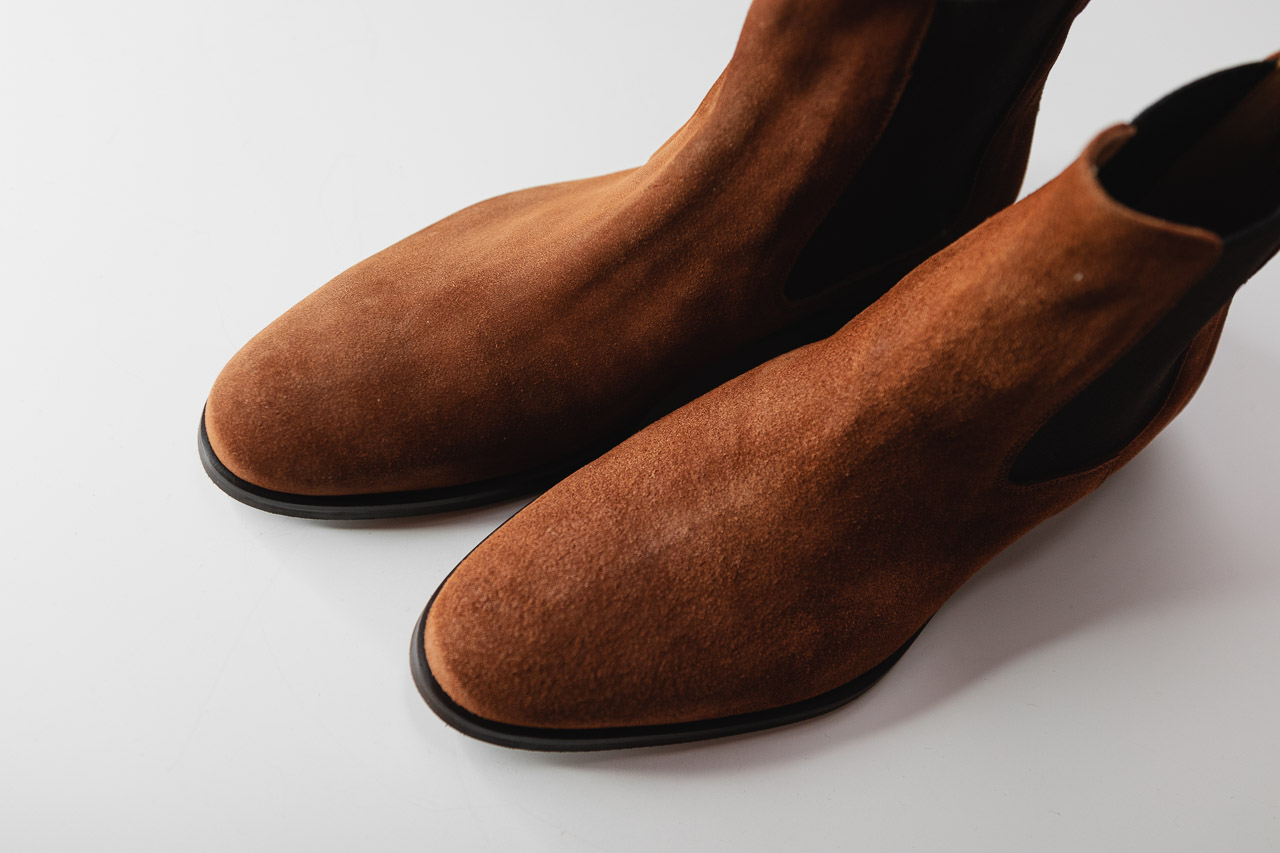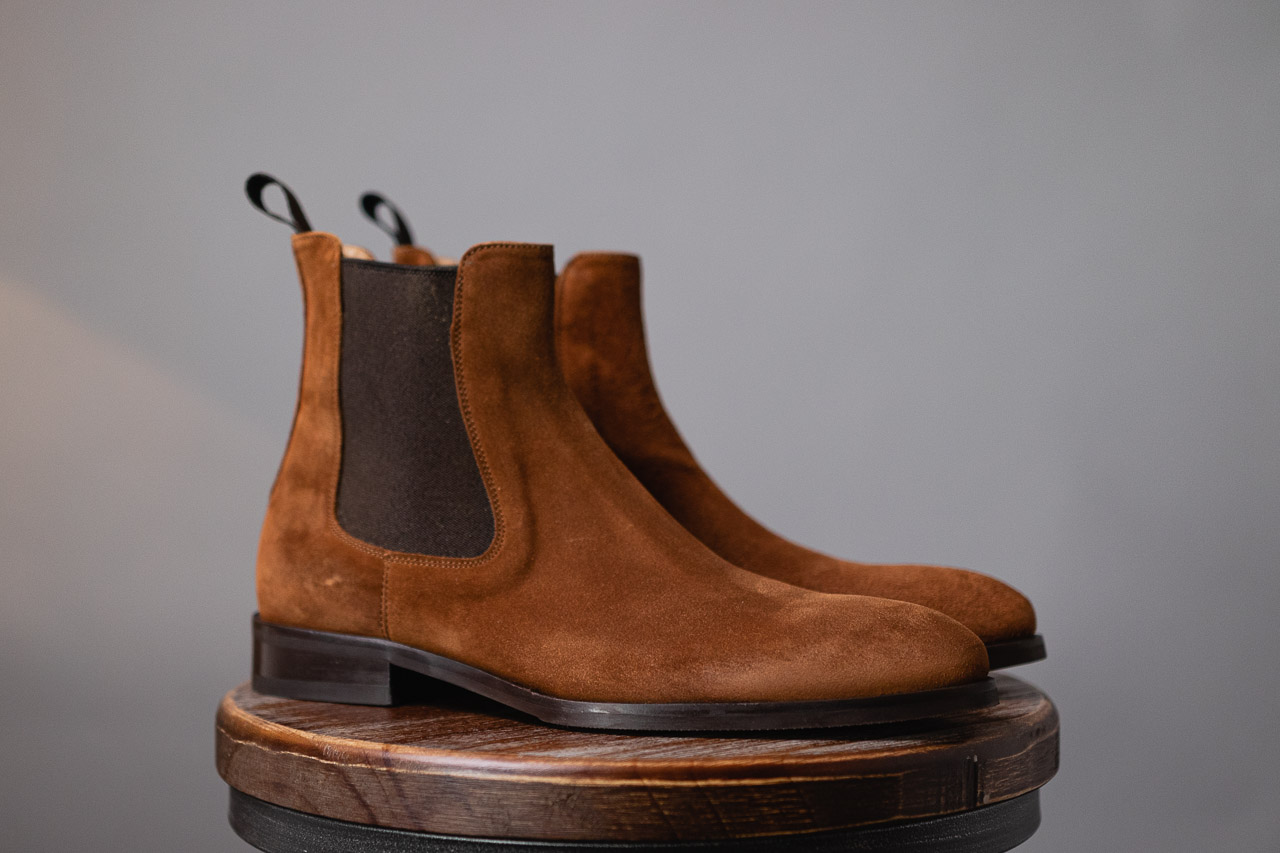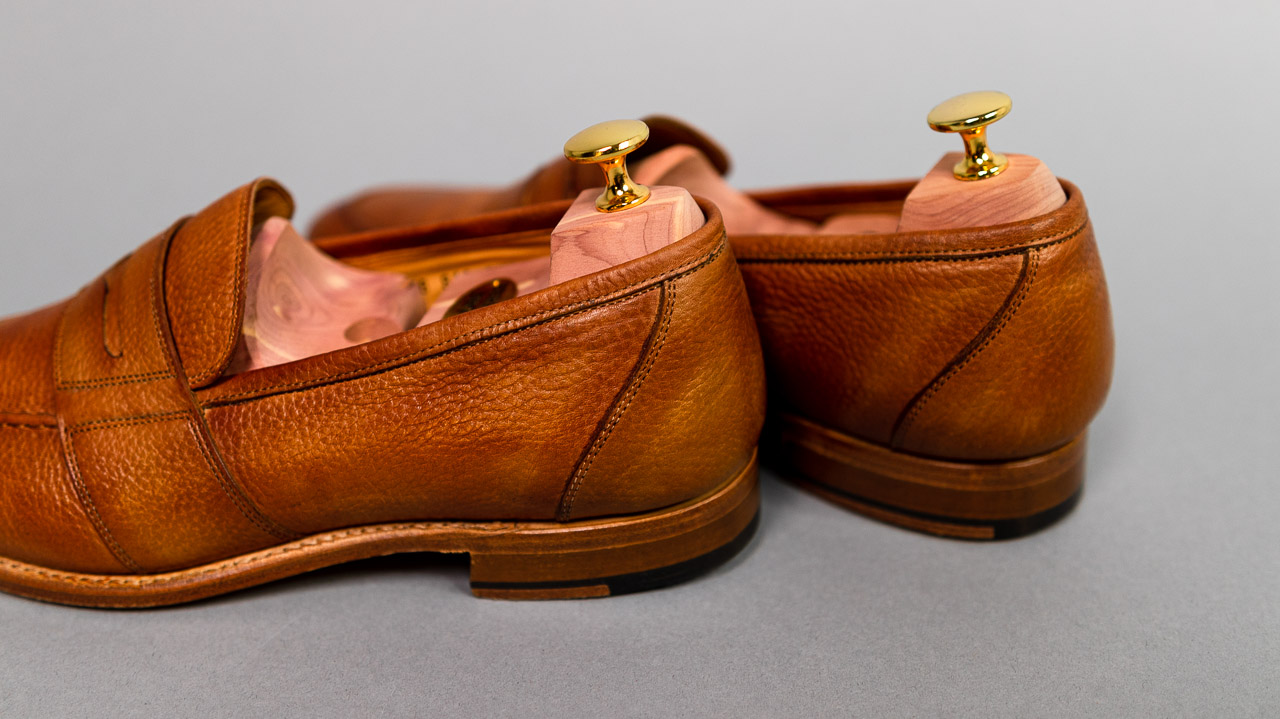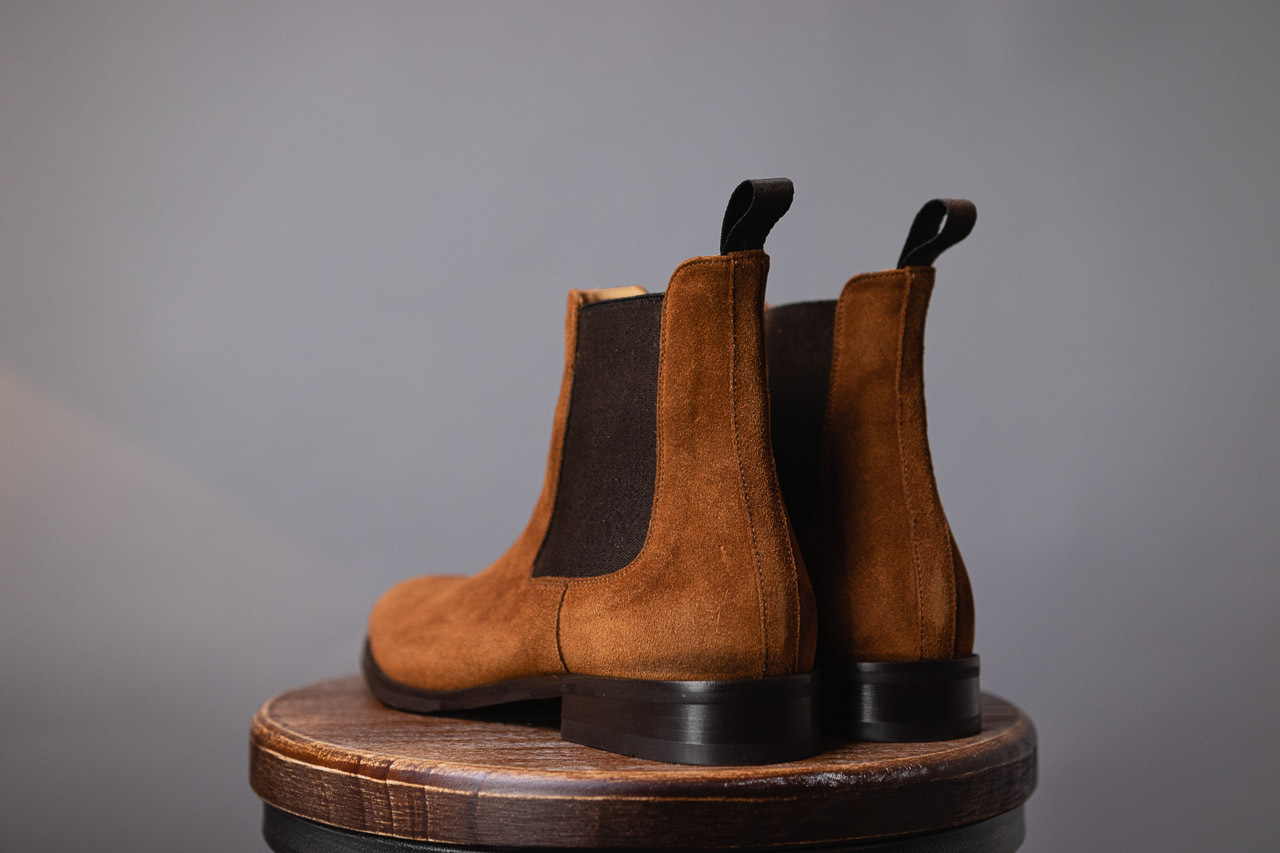We’re covering exactly how to waterproof leather shoes in this article. You want to weatherproof your leather and suede shoes from the cold, rainy, slushy winter sidewalks, so here are 5 ways to go about it!
Whenever winter comes along, I always think twice about wearing my leather and suede shoes. What if I get caught in a rain shower or snowstorm and my leather shoes aren’t protected? All that leather just exposed to the elements.
Duck boots and rain boots are great, but who wants to wear them every single day? Not me.
Luckily, there are a few tips and tricks I’ve picked up over the years so I can keep wearing my favorite shoes all year round.
Let’s get into it, shall we?
1. Buy water-repellent, weather-resistant shoes!
So this isn’t a waterproofing trick, necessarily, but more a suggestion to plan ahead.
Obviously, the best way to keep your shoes safe and dry throughout the winter is to get weather-resistant shoes in the first place.
Normally, this means picking up a pair of Bean Boots or some other weatherproof (read: casual) boots.
Casual boots do work with a casual outfit, but an effortless gent with a smart, sharp style (that’s you) likes to have a few options in his closet.
The Problem: Most weather-resistant, waterproof shoes are casual and clunky.
About a month ago, my friends at Ace Marks reached out about their newest line of
I immediately thought, damn, this is the perfect example of a sharp-looking shoe that’s easily dressed up or down… and most importantly, is weatherproof!
The suede uppers have been specially treated so water just runs right off. You don’t have to worry about ruining that soft, luxurious texture.
Lots of shoes are weatherproof and water-resistant, but rarely are they above that casual level on the spectrum of style formality.
And of course, you can have a nice suede shoe or boot, but can they withstand the elements straight out of the box? Probably not.
Here’s the kicker (and my favorite part about these new boots): They have 100% rubber outsoles that look just like leather outsoles.
They’re not bulky, bulbous, or obviously rubber in any way. Ace Marks designed their rubber soles to the same specifications as their leather soles, so you won’t even notice a difference (other than they won’t get ruined in the snow or rain).
So you get the sleek, slim, streamlined look of a Chelsea or chukka, but with the functionality and utility of a weatherproof rain shoe (i.e. you won’t slip and slide on a slushy sidewalk).
Plus, the soles still have the classic Italian Blake stitching so they’re easy to replace after years of wear.
So a handsome-looking, Italian handcrafted boot made with water-repellent suede and a sleek rubber outsole that looks like leather… is there a better way to complete your rainy-day smart, sharp outfit? I’d say no.
(Tap below for a special discount, just for being an EG reader)
The Troy Chelsea Boot is made from supple calfskin leather or 100% premium water-resistant suede for rugged durability in damp climates, providing exceptional fit and shape.
(Thanks to Ace Marks for partnering with us on this article! And thanks to you, dear reader, for supporting and shopping the brands that make this site possible.)
2. Keeping your leather shoes cleaned, conditioned, and polished protects the leather!
A great polishing routine won’t save your shoes in a heavy downpour, but sometimes a little bad weather comes along unexpectedly.
If you’re out and about when it starts sprinkling, having conditioned and waxed leather will preserve the shape and look of your shoe. As they say, an ounce of prevention is worth a pound of repair.
I recommend picking up a few leather-treatment basics. Anytime you have a leather shoe that’s over $100, you’re better off keeping them protected.
At the very least, use a good leather conditioner regularly
Leather conditioner comes in many forms and names: mink oil, conditioning cream, leather honey.
Make sure you use the right leather conditioner for the right shoe. For example, pure mink oil is generally used on working leathers (think saddles and work boots) and not fine leather dress shoes.
One of the classic conditioners is Saphir’s Renovateur. Made with a combination of mink oil, lanolin, and beeswax, you really only have to use this a few times a year to give your nice leather shoes a good conditioning, which will keep the leather soft and prevent cracking in the long run.
A simple product like Bickmore Bick 4 or Venetian Leather Balm is the perfect all-purpose leather conditioner.
In general, you want to think of it like applying hand cream on a cold, dry day. How much better do your hands feel once they’re moisturized?
Leather is skin, after all… and it needs to be moisturized just like your own skin does.
Cream polish or wax polish?
After conditioning your leather shoes, you may be ready to give your shoes a good polish. If you’re buying your first cans of polish, you may be unsure which is better: cream or wax polish?
This topic would be highly debated among leather shoe aficionados, but after a bit of research, experimentation, and general firsthand experience…
- cream polish tends to nourish and moisturize leather better
- while wax polish brings out a shoe’s shine and gloss better, and also adds an extra layer of protection.
I’ll have to save the particulars of a good shine for another article, but in general, if you’re going for a full shoe shine:
- start with an all-over application of cream polish, and
- finish off with a layer of wax polish if you want extra protection and bling-bling shine.
Boom ?
The best shine you’ll ever get will be from using Saphir products; Saphir is basically the Bentley of shoe care products.
If you’re on a budget or just starting a shine routine, this kit from Kiwi has everything you need to keep your shoes as good as new.
Suede Protector
If you’ve got suede shoes, one good rain is all it takes to ruin that delicate texture.
While you won’t be hitting the suede with cream and / or wax polish (bad idea), you simply need to give it a good once-over with a stiff-bristled brush to get the nap in line and remove any dirt.
Then, just hit it with any suede protector spray—this one from 3M is hard to beat.
If you go with the Ace Marks suede
3. SWIMS Galoshes

Overshoes (or galoshes) are making a comeback thanks to companies like SWIMS.
For years people have avoided the bulky, frumpy look of galoshes in favor of duck boots and other waterproof footwear.
But SWIMS has changed the game. Their galoshes are slim-lined so you don’t look like you’re walking around wearing massive rubber boots.
With a felt interior, these are easy to slip over your dress shoes if it starts raining like crazy. And they’ll provide good traction on slippery surfaces.
What’s best is you don’t need to bring a second pair of shoes to the office—just slip off your SWIMS when you show up and set your galoshes in your desk.
They’re certainly the coolest galoshes we’ve seen, and they’re extremely effective with minimal fuss. Plus, no one is going to notice your shoes in the middle of a downpour anyway.
4. Prevent Salt Stains (+How to Remove Them)
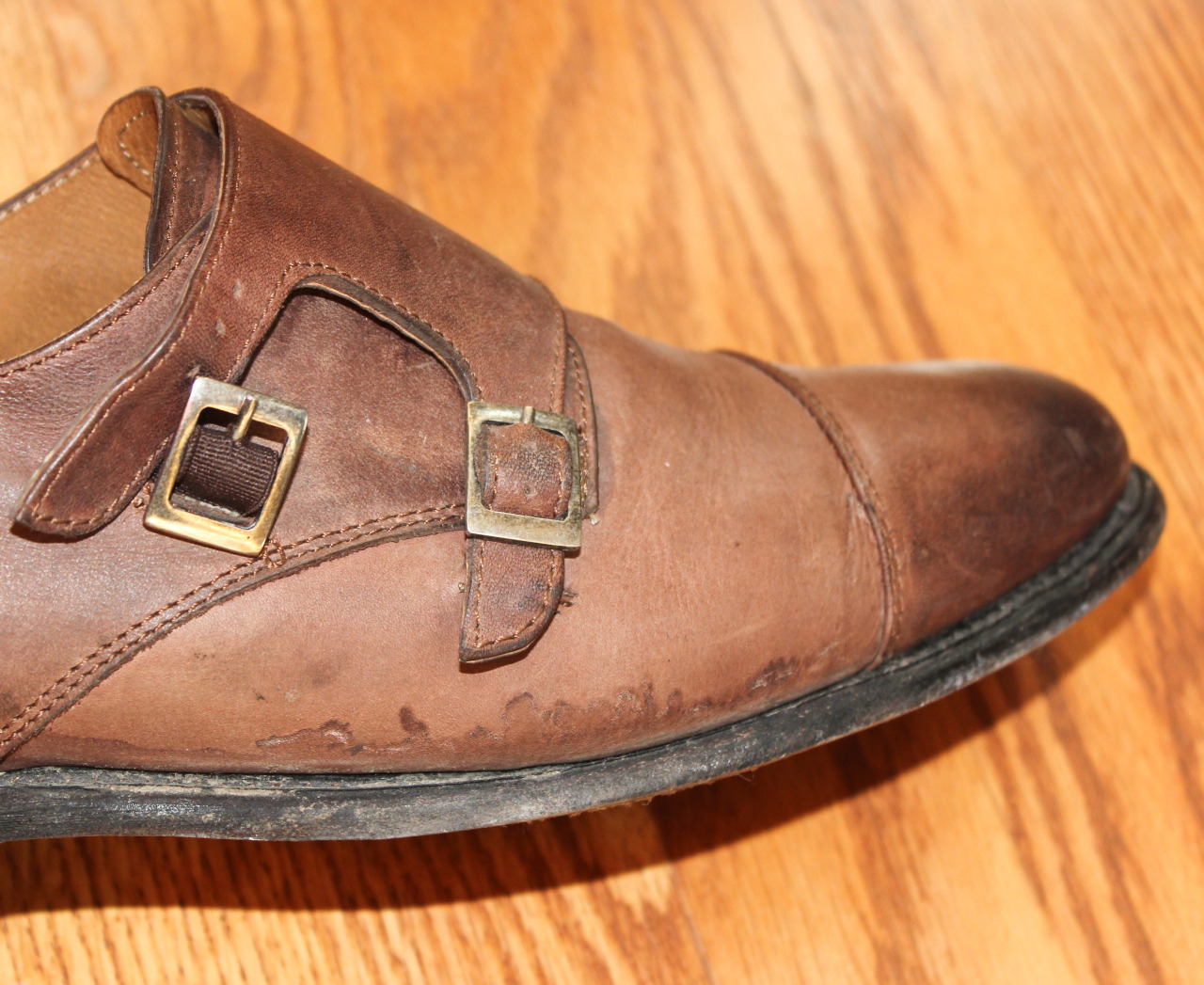
A great polishing routine like we mentioned above will prevent the salt spreads on city sidewalks from getting to your leather.
But what if the salt’s gotten to your shoes anyway?
Don’t worry, they’re not ruined.
Here’s a salt stain solution worth trying:
- Make a solution of equal parts white vinegar and water
- Rub the solution into the salt stain, focusing on the ridge of salt buildup.
- It’ll take a few minutes and you’ll have to add more solution to keep working the salt down.
- When the stain is gone, let your shoes dry for an hour. (Don’t put them next to a heater or blowdry them… if your shoes have salt damage, they’re starving for some TLC, so artificial heat isn’t a good idea)
- After they’ve dried, go through the polishing routine we mentioned above. They’ll be good as new.
If you’re looking for a product to help with stubborn salt stains, give Bickmore Bick 1 a try.
This is a pretty strong leather cleaner that’s guaranteed to not discolor your tanned leather. Just make sure to follow it up with Bick 4 to re-moisturize the leather.
5. Always use shoe trees to keep the shape and absorb moisture
Do you just throw your shoes in the closet?
Good lordy lord, please don’t!
For your nice leather shoes (that goes for everything from loafers to boots in both leather and suede)… the shoes you care about most… make sure that after a long day of wear, you put a pair of shoe trees in them.
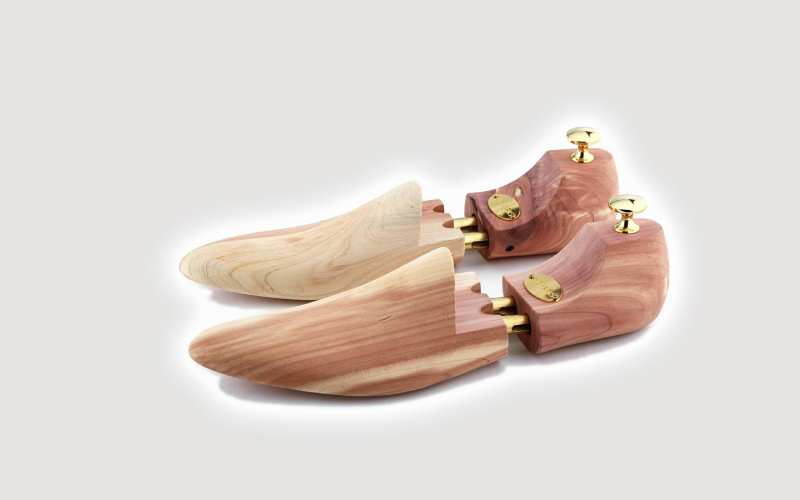
Cedar shoe trees are your best option.
Metal and plastic shoe trees might be more affordable, but they tend to trap moisture inside the leather, causing more cracking and damage in the long-run.
Cedar shoe trees absorb moisture, which is exactly what you want. Any moisture and dampness from your feet can cause damage, so cedar shoe trees are a must if you want your shoes to last.
And if you’re trying to keep it to a bare minimum, one pair of cedar shoe trees will suffice.
Always keep them in your most recently-used pair, and whenever you wear different shoes, take it out of the current pair once you get home and place them in the pair you were just wearing.
Do these waterproofing and weatherproofing tips help?
Ok, gents, it’s time to get out your polishing kits for winter!
At the bare minimum, don’t forget to moisturize your leathers and spray moisture protectant on your suede shoes.
Of course, if mixing solutions and timing your saddle-soaping, conditioning, and polishing sessions sounds a bit daunting, you can pick up a pair of shoes that will get you through the toughest days of winter. In suede, no less!
Make sure to check out Ace Marks’ new line of water-repellent, weather-resistant suede boots.
(And don’t forget, they’re hooking up EG readers with a special discount for a limited time! Just hit that link below ↓)
The Troy Chelsea Boot is made from supple calfskin leather or 100% premium water-resistant suede for rugged durability in damp climates, providing exceptional fit and shape.
They have all the sophistication of classic Italian style, but they’re built to withstand those unexpected downpours that would ruin a lesser pair of shoes.
If you’re like me, you think of all your shoes as an investment.
For that reason, putting in some extra love into keeping your leather shoes conditioned and your suede bois brushed and protected is just what you do.
Gotta keep that investment strong, right?
Best of all, if you use these tips, you no longer have to relegate yourself to big chunky rubber boots all winter long. As you’ve just seen, there are a ton of ways to stay stylish in suede and leather shoes, even when the weather’s a bit rough.

